Trump administration puts strain on Harvard’s Canadian hockey pipeline

Article content
When Kristin Della Rovere first stepped onto Harvard University’s campus as a fresh-faced teenager in 2016, it sparked a feeling she had never experienced with any other school.
She felt at home.
“When you get the opportunity to attend one of the best schools in the world, it’s hard to say no,” she told Postmedia. “I went on my official visit and I just fell in love with the school, and I knew that was the only place I wanted to be.”
While the Caledon, Ont., product enrolled two years later as a pre-medical student, studying psychology and neuroscience, Della Rovere was there first and foremost to play for the Harvard Crimson women’s hockey team — a program known for producing elite Canadian talent like Jennifer Botterill and Sarah Vaillancourt.
After several seasons in Ontario’s top junior circuit, she worked her way up from freshman to captain of the program between 2021 and 2023.
Della Rovere found herself graduating just as the PWHL was being formed in the summer of 2023. That fall, she was drafted in the tenth round, 56th overall, by PWHL Ottawa.
She was one of six Harvard alumni to participate in PWHL training camps that fall — including goaltender Emerance Maschmeyer, who joined Della Rovere in Ottawa, eight years removed from her last season wearing the crimson, white and black.
“(Harvard) was a backbone for me,” Della Rovere said. “I don’t know if I would have made it there without my experience at the university.
“If I had to go back and choose a different school, I would have chosen the same one.”
But that once-simple decision is one that current and prospective students are now learning can’t be taken for granted.
On May 22, U.S. President Donald Trump’s administration revoked Harvard’s ability to enroll international students, who account for more than a quarter of the institution’s total enrollment.
The developments mark the latest escalation in an ongoing conflict spurred by the administration’s claims that Harvard failed to adequately protect Jewish students from antisemitism.
While a U.S. judge issued a restraining order that blocked the Department of Homeland Security’s edict regarding international students at Harvard, the school’s athletes are in a precarious position.
The Department of Homeland Security said Harvard had 30 days to prove it meets the Student and Exchange Visitor Programme’s (SEVP) rules for hosting international students. However, the judge also said she plans to issue a longer-term block, allowing international students to remain at Harvard while the case continues.
As one of the oldest institutions of higher learning in the U.S., Harvard is hallowed ground for students and athletes alike. But being both is a unique and rigorous commitment — not one to be taken lightly.
“You have to be 110% at all times,” Della Rovere said. “The school is very demanding and professors usually are not as lenient with athletics.”
And once a student commits Harvard, leaving is virtually unheard of. Its transfer-out rate is less than 1%.
“Once you’re at Harvard, you’re there,” said Maschmeyer, who studied sociology and economics. “That’s for four years.”
But for current and prospective international student-athletes, that distinctive blend of academic excellence and elite athletics could become inaccessible in the fallout of the Trump administration’s dispute.
“It certainly is creating a lot of anxiety and uncertainty about, ‘Can I, can I not go to school and play in the sport I have the opportunity to play?” said Alessandro Quartiroli, a professor of sport psychology at the University of Wisconsin-La Crosse. “Clearly, a university like Harvard also carries some weight and educational prospects for a future outside of sport, which has created (more) anxiety in those athletes.”
Caught in the dispute are more than three dozen Canadian student-athletes listed on the school’s website, spanning sports such as hockey, soccer, lacrosse and fencing. A ban on international student visas could not only end their Harvard careers, but also decimate the school’s 42 Division I sports teams — the most in the U.S.
Ottawa-born goaltender Emily Davidson and defenceman Kyle Aucoin played for the Crimson women’s and men’s hockey teams last season.
While Davidson is entering her senior year of eligibility, Aucoin — whose NHL rights belong to the Tampa Bay Lightning — has transferred to Miami University after completing four years at Harvard.
Both declined to speak to Postmedia.
Ivy League schools do not allow athletes to participate beyond four years. Graduated athletes like Aucoin can enter the NCAA’s transfer portal at any time and be immediately eligible to play at non-Ivy League schools. However, for undergraduates, each sport has a different transfer window under NCAA rules. The hockey transfer window ran from March 30 to May 13 for men, and from March 16 to April 29 for women.
Davidson is listed on the women’s hockey team roster for the 2025-26 season, alongside fellow Canadian and senior Zoe Boosamra. Both players were named team captains for the coming campaign. Ontarians Paige Lester and Gabi Davidson Adams graduated following the 2024-25 season.
The men’s hockey team roster for the previous season included six Canadians, including captain Jack Bar and leading scorer Mick Thompson.
Postmedia was unable to reach players of either team for comment, despite requests.
Maschmeyer, a seven-time world championship medalist, made her first, unofficial visit to Harvard at just 14 years old.
Her older sister Brittaney was playing NCAA hockey at St. Lawrence University, naturally making the younger Maschmeyer want to follow in her footsteps. At the time, she was playing with a boys AAA hockey team just outside of Edmonton and her spring team had a tournament in Boston.
That first look at the campus and athletic facilities elicited a very similar reaction to Della Rovere’s first look.
“I remember telling my mom, ‘I want to go here one day,’” Maschmeyer said. “And my mom was like, ‘OK, keep your grades up, keep working hard.’”
Both Maschmeyer and Della Rovere put the work in and found themselves among many other international student-athletes with similar dreams of studying and playing at Harvard. Their respective teams featured a strong Canadian presence, which they said were critical to their teams’ success on the ice.
In Maschmeyer’s junior year, she backstopped Harvard to the program’s first national championship appearance in ten years.
Beyond the rink, Maschmeyer said her broader Harvard experience — academically and socially — was deeply enriched by the school’s commitment to diversity.
“It would definitely be a missed opportunity to only have Americans at the school,” she said.
Harvard’s athletic department and the NCAA declined to comment on the situation, but they may face questions about how to handle potential transfer requests from international athletes depending on the outcomes of the Trump administration’s ongoing dispute.
The NCAA has the ability to make exceptions to its transfer rules in extraordinary situations beyond an athlete’s control. In the past, it has granted immediate eligibility to athletes whose programs were cut entirely. However, it’s uncertain whether the same flexibility would apply if international students at Harvard are forced to leave — or choose to.
According to Della Rovere, Harvard’s hockey program isn’t one many people rush to pull out of. When the COVID-19 pandemic convinced the Ivy League to sit out the 2020-21 NCAA season, she and most of her teammates unenrolled from the university to avoid burning a year of athletic eligibility, even when transferring was on the table.
“I think that really speaks to our program, how people wanted to play at Harvard,” Della Rovere said. “We didn’t want to play anywhere else, even when COVID came up and it meant that other teams were competing, but we weren’t.”
However, Quartiroli, who once was an international student himself, said there’s a great risk in this current climate of alienating students, making them feel like “second-class citizens.”
“There is some value, some pride that you take as an international student, that when you see stuff like this, you’re like, ‘Well, you don’t want me, that’s your problem. I’ll find somewhere where they want me,’” he said.
For two nations that are so culturally intertwined, this current rift is unfamiliar territory for most Canadian athletes residing in the U.S. For both Maschmeyer and Della Rovere, the idea of being labeled “international” at a place like Harvard never quite resonated.
“I felt like I was in the same country,” Maschmeyer said. “I feel like oftentimes we define anything outside of North America as international, but when it comes down to the actual definition, Canada would be.”
That privilege of existing freely between the two countries, grounded by decades of political stability, is now at risk. Even so, Harvard’s women’s hockey team has recently recruited three Canadian players for future classes, including the Nepean Wildcats’ Serra Yildir, a 2008-born goaltender.
Without any official updates as the conflict works its way through U.S. District Court, the future of international athletes is in limbo.
Although the NCAA always has been the premier route for women’s hockey — more than 90% of players in the PWHL are alumni of the association — Maschmeyer said the quality of talent and opportunity within Canada is also superb.
For example, Montreal’s Concordia University produced current New York Sirens forward Emmy Fecteau and the program is coached by Harvard alumnus and U.S. Olympic medalist Julie Chu.
U Sports, the national governing body for university athletics in Canada, has produced seven PWHL players, with 26 more declaring their eligibility for the 2025 PWHL draft this month.
“You can still attain your goal of playing in the PWHL, going to the Olympics, representing your country,” Maschmeyer said. “The possibility is still there.”
For Harvard athletes still working toward their degrees, it’s a waiting game.
“For any athlete that commits to a school and chooses to play their collegiate career at a specific university, it’s not a decision that you make lightly, and especially at a place like Harvard,” Della Rovere said. “It’s a commitment that you make beyond athletics.”







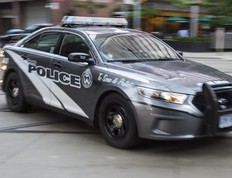
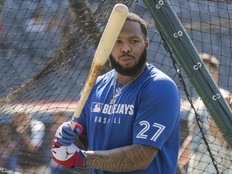
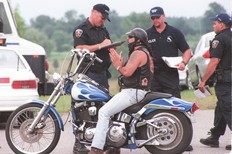
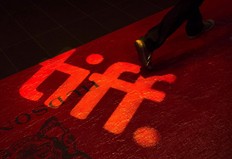
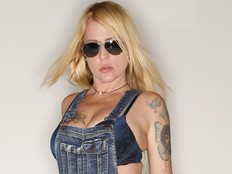

Postmedia is committed to maintaining a lively but civil forum for discussion. Please keep comments relevant and respectful. Comments may take up to an hour to appear on the site. You will receive an email if there is a reply to your comment, an update to a thread you follow or if a user you follow comments. Visit our Community Guidelines for more information.